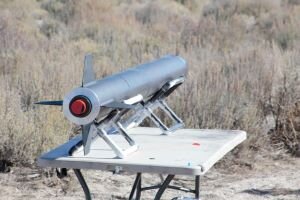
Project Overview
The NASA University Student Launch Initiative (USLI) is a multidisciplinary project challenging students to research, design, and build a high-powered rocket to complete a set of objectives. For the 2019-20 competition, the objectives include the altitude challenge and the lunar ice collection challenge. For the altitude challenge, the rocket's target apogee is called early in the competition season. The lunar ice collection challenge will involve deployment of a rover or UAV when the rocket's landing, which then travels to designated locations to collect samples of simulated lunar ice. As the ECE capstone team, we worked with three subsystems: avionics for flight data collection, blade extending apogee variance system (BEAVS) to address the altitude challenge, rover payload to address the ice collection challenge.
Executive Summary
There were three major design documents submitted throughout the project timeline to compete in the NASA USLI: Preliminary Design Review (PDR), Critical Design Review (CDR), and Flight Readiness Review (FRR). PDR outlined the overall initial research stage of the project. It included considering all potential design decisions, proposing initial design choices and reasoning supported by facts and data, and data regarding to test flights or subscale launches conducted out in Brothers, Oregon. CDR detailed the changes made to each individual system in the launch vehicle since the design choices proposed in PDR, and it also included all testing procedures proposed to ensure for functional systems. Up to this point, we had a fully functional avionics system, which was proto-boarded and launched. This stage also involved finalizing the PCB and code designs to go into final testing and fabrication. There were some difficulties getting supplies on time due to supply chain delays. The boards were then fabricated, and some errors were made with the the footprints. This taught us the necessity of rigorous review. After this problem was fixed, we finalized the designs and assembly. This enabled us to test the final board designs for all systems (Avionics, BEAVS, and Payload) in our full-scale launches. FRR finalized the design decisions for each system and verified all testing procedures. Each of these reports were no shorter than 200 pages, supported with data, graphs, and calculations.
Besides the technical aspects of this project, there were safety and STEM engagement subteams that ensured the team follows NASA's degree of safety procedures and promotes NASA's mission of educating and engaging youths in the STEM field. Moreover, working in a large team with engineering students from other disciplines taught us to practice good communication skills.
The competition was originally scheduled for early April. The team intended travel to Huntsville, Alabama to compete against teams from across the nation. However, due to the impact of COVID-19, the physical competition was canceled and the criteria of the competition are now based on the test launch data and the design reports.
Special thanks to Nancy Squires and the rest of USLI
